When completing our home studies for each of our adoptions from China, one of the questions that came up both times with our social worker was how would we implement our new child’s culture into our family. We eagerly replied that we would celebrate Chinese New Year, would add Chinese décor to our home, and that we would add Chinese dishes to our meal rotation. While in China we picked up souvenirs from their provinces to add to shelves in our home, took pictures to frame and add to our gallery walls, and purchased silks in various sizes for them to wear on Chinese New Year for the next few years.
We felt as though we had made a good start in honoring their culture. But, when our daughters finally came home, we quickly realized that implementing their culture into our daily lives ran much deeper than silk dresses, pandas, and Chinese holidays. They were hungry for more and for deeper connections.
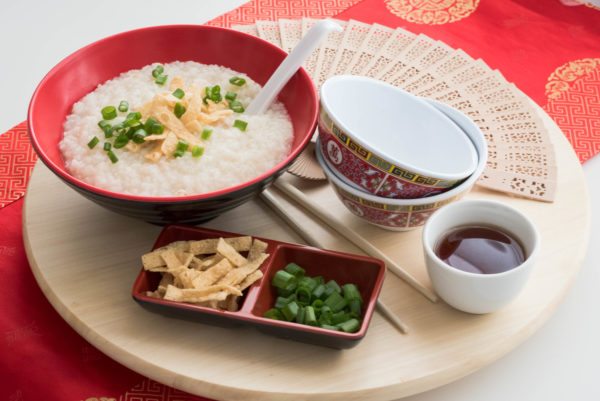
One of the most important ways in our home that we recognize our girls’ culture is through the food we serve and how we serve it. We believe there is a strong connection between food, comfort, and home so going out for the occasional Americanized Chinese meal is okay (one of my girls loves Panda Express!), but having the foods that bring comfort to our girls in regular rotation and seeing me prepare them is so important.
Our first daughter, YuChen, lived in an orphanage for 3.5 years before we met her and, based on what we have learned about where she lived, we believe her diet was pretty repetitive with little variety. Congee was most likely a staple supplemented with some meat and vegetables when available. We quickly learned that her love language is food, specifically Chinese food. I vividly remember her first morning with us in Xi’an when she saw the breakfast buffet at the hotel and how her eyes lit up. Many of the items on that buffet like jiaozi, steamed buns, rice, and lo mein were frequent requests when she first came home and six years later she still prefers Chinese dishes to American ones.
Breakfast frequently consists of dumplings or rice and the day she learned to prepare her own ramen noodles for breakfast is one of her proudest moments. When she picks a snack to take to school she chooses seaweed or dried ramen over Goldfish crackers every time. Had she been served jiaozi and lo mein in her orphanage? Probably not, but I truly believe food memories run deep. She likes to imagine that her birth mother craved jiaozi while pregnant with her and nothing brings her more comfort than the jiaozi we make together. I will share our jiaozi recipe later in this post because it is super easy and you and your kids will not only love them but will love making them together.
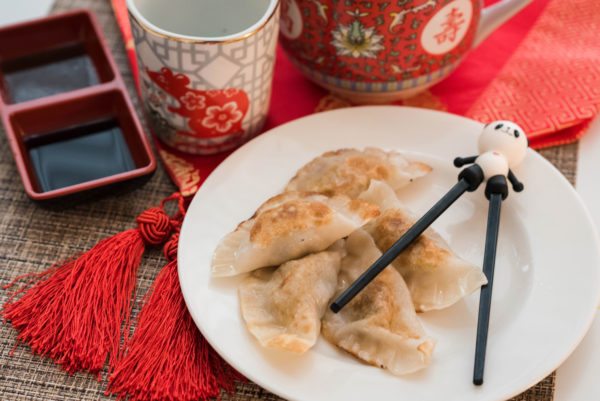
When our second daughter Finley came home, she really drove home how important honoring culture through food is. Her situation was a little different in that she came to us at age 4.75 and had spent almost 2 years in a foster home before we met. Her food expectations were set very high. Very, very high.
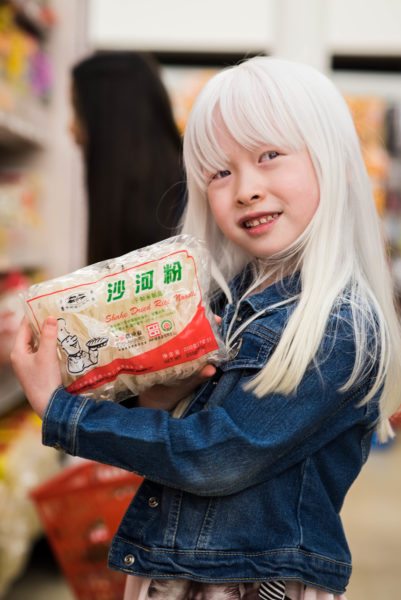
We had the honor of having dinner with her foster family in Beijing and her foster mom prepared a meal that to this day is one of the best meals we have had. Every square inch of the table was filled with bowls of delicious home cooked dishes that she had spent all day making. Everyone gathered around and using their chopsticks sampled all of the delicious food from the communal bowls. A lazy susan in the middle of the table made reaching some of the dishes easier. The other kids would get up and walk around the table to get to their favorite dishes. Slurping and burping came from every side of the table!
It sunk in quickly once home how important what we had witnessed that night was when we noticed some of our daughter’s frustrations at meal time. I was used to preparing plates and bringing each family member’s to the table. Finley would get up and sample from everyone’s plates before eating what was on hers. She would appear to be disappointed when meals were served as if to say “is this it?”
After a few frustrating meals it dawned on me that we were doing it all wrong. She wasn’t being defiant and wasn’t exhibiting poor table manners, she was a square peg being forced into a round hole at meal time and who were we to ask her to change? I started bringing all the bowls of food to the table. I ordered a lazy susan and placed it on the table. The first time she came to the table and saw it she was so excited and declared we were having a feast. She would still tell me my food wasn’t as good as foster mom’s, and in all fairness it wasn’t, but we were making progress!
Soy sauce became a staple at the table no matter what the meal. We had a few Chinese dishes in regular rotation but added others based on what we had eaten that night at her foster home. Stir fried egg and tomatoes is hands down one of her favorites and I even tried my hand at chicken feet! Drinking from your soup bowl is encouraged and slurping of noodles is allowed although we do discuss cultural differences so that hopefully they don’t find themselves at a business dinner one day as adults slurping their meal!

After YuChen came home we would occasionally shop at Asian markets and would pick up Asian items at our local grocery store, but when Finley arrived we started making those trips more frequently. If I could replace an item in the pantry with one from the Asian market with a Chinese label I did so.
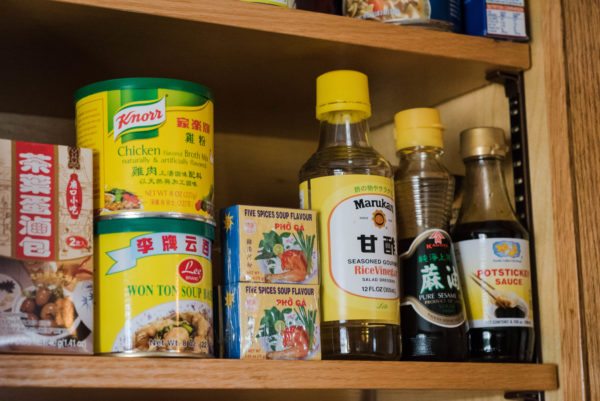
We always have a supply of Chinese and other Asian snacks on hand like yogurt drinks with the mini straws attached, seaweed snacks, and various rice crackers. Our freezer is filled with frozen dumplings and steamed buns and wontons for quick meals. The last time I bought rice it was in a 20 pound bag!
Asian markets are also a great place to pick up chopsticks, rice bowls, teapots, teacups and other housewares items your child may be used to. We ate several times out of small round metal bowls on our trip to bring Finley home so when we got home I sourced some out in Chinatown. We love to each pick out a new item when we go to sample different items. And then there is the smell, the smell that instantly takes us back to China every single time! Tanks of frogs, bins of snails, and various species of fish are not the usual fare found at your local grocery store.
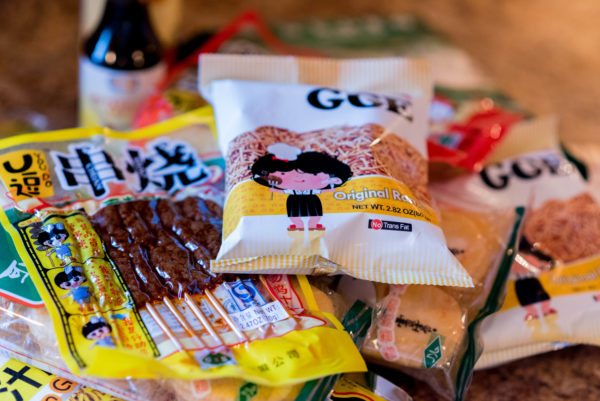
We recently moved from the suburbs of Chicago where Chinatown was a quick drive away to much smaller town in Kentucky. There are a couple small Asian markets in town that we can run to for a quick item, but they do not have near the selection that the larger markets do. We put our large cooler in the van and make a run to Nashville every few weeks to go to the larger markets to load up on favorites.
On a recent trip we spotted longan which I had not seen since we were in China. We picked up a bunch to bring home and as soon as Finley had the first one she said, “These taste like memories!” She will also excitedly (and proudly) tell the cashiers that she is from China. She is trying to make a connection which is something we love seeing.
As a Chinese person with albinism, she doesn’t get recognized as Chinese like her sister does. As caucasian parents who are often mistaken as her biological parents, we were unsure how to help her navigate being Chinese but not looking typically Chinese. Shopping in an Asian market and eating at authentic Chinese restaurants (not Panda Express!) gives her an opportunity to see herself in others. We are still working on making connections within the community beyond other adoptees as we realize how important this is to our girls.

All of the ways we told our social worker we would honor our girls’ culture, we have implemented but not all of them are a part of our daily life like food is. Chinese New Year is celebrated with new outfits, haircuts and a deep cleaning of the house. Silks are worn and red envelopes are exchanged. Our version of mooncakes is made with a traditional mold and this recipe https://www.nohandsbutours.com/2016/09/06/celebrating-mid-autumn-moon-festival-mooncake-alternative/ during the Mid Autumn Festival. The items we picked up in each of the girl’s provinces are displayed in our living room along with pictures taken on both trips.
Two of my favorite pictures are ones in the photo above taken by YuChen in Beijing when we traveled to bring Finley home, she proudly points out that she took them and will tell you about when we saw the Forbidden City and The Great Wall. I purchased a large, vintage pull down map of Asia that hangs in our living room. Whenever we learn about a new place in China or meet a new adoptive friend from China the girls go to the map to see where they are from. When I run across books about China I will pick them up to add to our bookshelves and we will get them out and look through the pictures together.
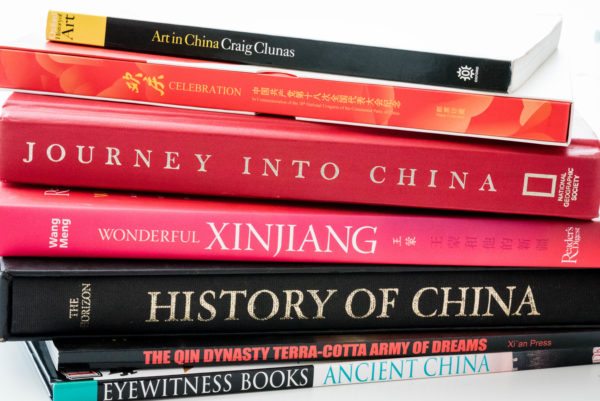
I know what we are implementing can never make up for the loss of their first culture, but I hope in some small way a plate of homemade jiaozi and a bowl of congee make their journeys a little easier… and tastier.
Speaking of tasty, this is the recipe I use to make jiaozi. We have been using this recipe for years and it never fails to produce yummy dumplings! A quick tip, order a dumpling press (we have this one). You can make them without, but I find using the press much quicker.
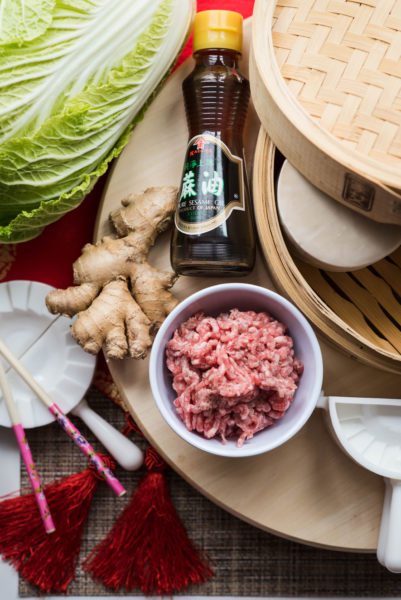
Filling:
1 lb ground pork or chicken
1 cup finely chopped nappa cabbage
1 bunch of green onions thinly sliced
½ tsp ginger (ground or fresh)
2 Tbsp soy sauce
2 Tbsp dry sherry or cooking sake
½ tsp roasted sesame oil
1-2 packages pre-made round dumpling wrappers. These are usually found in the freezer section of most Asian markets.
Dumpling sauce:
1 cup soy sauce
½ cup rice vinegar
1 tsp sugar
1 Tbsp chopped green onions
¼ tsp roasted sesame oil
¼ tsp Sriracha (optional)
1. Mix all ingredients for the filling in a bowl. Cover and chill for 1 hour before filling wrappers.
2. To make the dumpling, put one dumpling wrapper in the palm of your hand. Dip a finger in water and run along outside edge of wrapper. Drop about ½ tsp of filling in the middle of the wrapper and then fold over to seal. The wet edges should seal together to close the jiaozi. This is where the dumpling press comes in handy!
3. Stage prepared dumplings on a baking sheet lined with parchment paper.
4. Add 2-3 Tbsp of oil to skillet and heat over med heat. On my electric range I set the temp to 3 or 4.
5. Once oil is hot add jiaozi to pan and cook until browned. Use a fork to flip jiaozi over.
6. Add ¼ cup + 2 Tbsp of water to skillet and cover. Continue to cook until water has almost evaporated – approximately 4-5 minutes. Remove cover from skillet and continue to cook an additional 1-2 minutes. Cook times may vary, both sides will be browned, one side more than the other.
7. Serve with dumpling sauce.
– guest post by Martha

























I love all your posts. You inspire me to bring China into our home (because it’s already in our hearts!) Thank you!
Gosh I’m so impressed with all that you do for your kitchen to make it Chinese! It looks like mine (I’m a Chinese and that’s the only way I know how to cook)! You even have the jiaozi press that I have not seen in ages (I used that to make my jiaozi when I was little). I’m ordering one for my children. Happy CNY!!
What a wonderful adoptive family you are!
This article made me cry with bittersweet memories of being denied anything Asian (especially food) by my adoptive mother.
I was adopted at the age of one.. .but I craved rice and had to steal minuet rice any chance I got.
I was taught to be Ashamed of my Korean heritage.
I love your gracious kind loving heart.